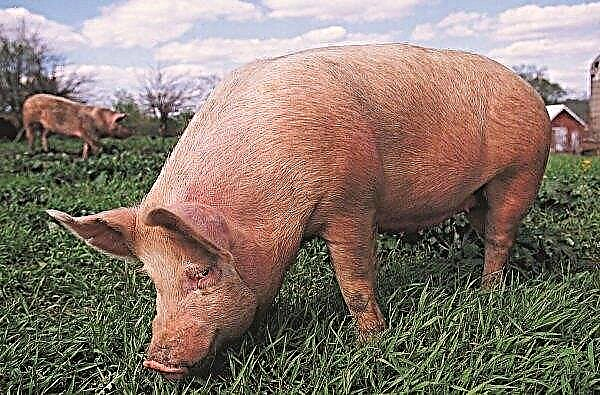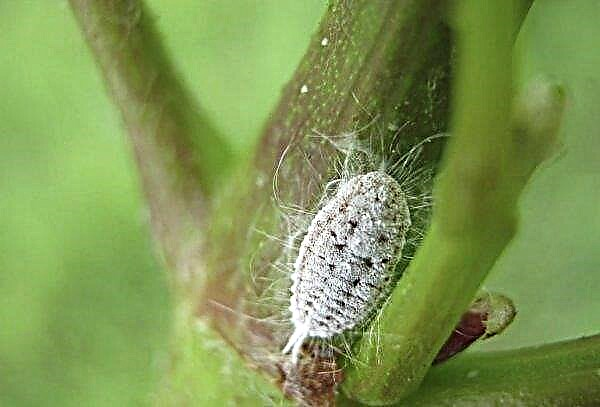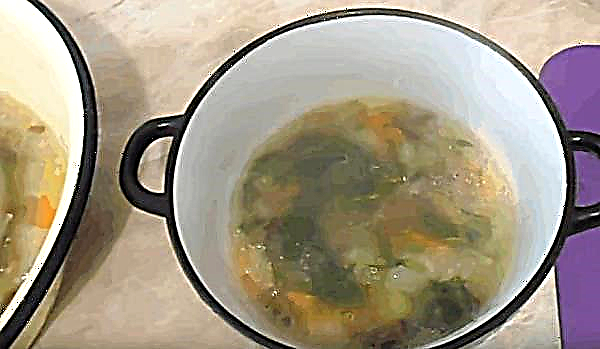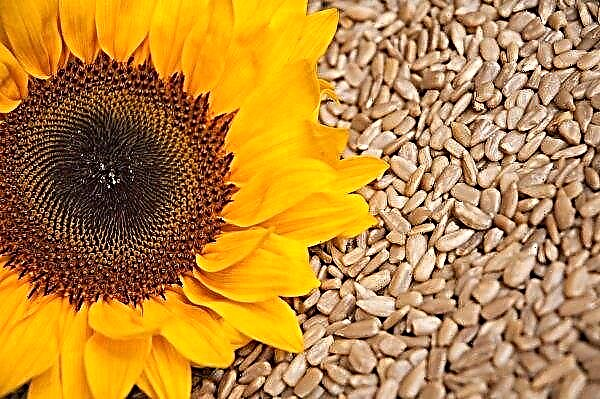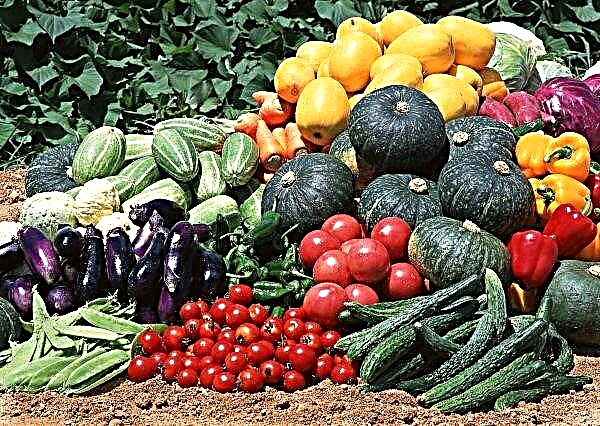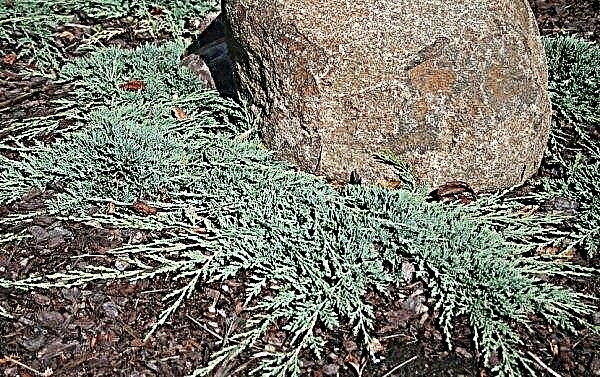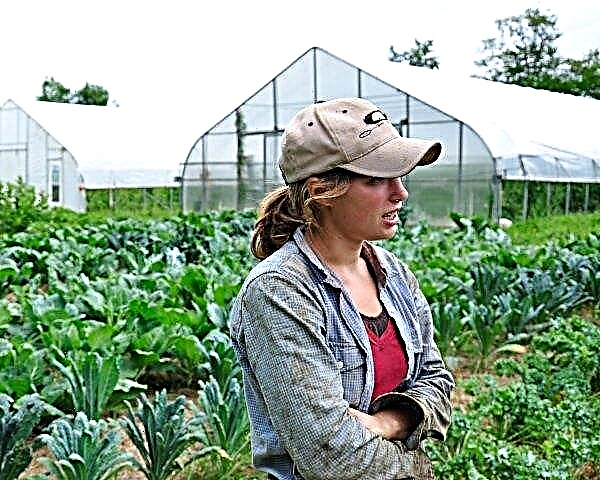Tomatoes are one of the most “capricious” plants in the garden, so care for them should be appropriate. Without timely cultivation, fertilizing, watering and preventive treatment of diseases, one cannot count on a good harvest. One of the most common problems of tomatoes is the appearance of dark spots on the fruit, so this article focuses on this issue.
Basic rules for growing tomatoes
To understand the causes of plant soreness, you need to review the features of caring for them (do you do everything that way).

There are several "golden" rules for growing tomatoes, the main among which are the following:
- When choosing seedlings or planting seedlings at a constant place of growth, it is worth selecting plants only with a well-developed root system, a thick stem and a minimum amount of green mass.
- Having decided to sow the seeds immediately in open soil, make sure that the earth warms up well. To do this, a week before the intended disembarkation, a film coating should be installed above the surface. Do not remove it until the average daily temperature rises to +15 ° C. Supports for such coatings can be made of durable wire, and then stretch a plastic film at a height of 40–45 cm.
- When caring for transplanted seedlings, mulch the beds so that the temperature in the zone of the root system is within + 20 ... + 25 ° C. In addition, mulching will help to maintain sufficient moisture near the roots.
- Do not forget to pinch and trim strongly branching varieties. Stepsons should be left only when you plan to use them for further planting (varieties Queen Margot, Grapefruit, Golden Heart, Sanka are suitable for these purposes).
- Provide tomatoes with timely watering (at least once every 7-10 days), without flooding the plants with excessive amounts of water. When watering, water should not fall on leaves and poured fruits.
- You should not plant tomato seedlings on the same beds for two years in a row, otherwise they can quickly become ill. This rule also applies to planting after potatoes, eggplant and pepper.
Did you know? The first mention of tomatoes on European soil dates back to 1955. True, in those days, Europeans called the tomato familiar to us the "golden apple."
Why do brown spots appear on tomato leaves, and what should I do about it
Brown spots on the leaves and fruits of tomato bushes are a common problem, the root cause of which may be various infectious and bacterial ailments. What are the best known symptoms and treatments?
Late blight
This fungal ailment is known to all gardeners, since it is it that is most often found on tomatoes. It’s quite difficult to figure out exactly what it is, because the general term means the impact of any of the 50 possible types of fungus, most of which are constantly in the ground, but are activated in the second half of summer.

There are several reasons for late blight:
- close placement of tomato beds to plantations of potatoes or other solanaceous crops;
- thickened plantations and limited ventilation between the bushes;
- sharp temperature drops with a high level of humidity;
- frequent and heavy rains, which is especially typical for the second half of summer;
- uncontrolled and plentiful watering with irrigation of fruits and leaves;
- an excess of lime and nitrogen in the soil;
- lack of potassium, copper, manganese in the soil.
- the appearance of brown spots on the bottom of the sheets, which grow over time, and the sheet itself becomes dry and curls into a tube;
- darkening on the green stems of the plant, causing blackening of the entire surface;
- the formation of black spots on the fruits of a tomato.
Important! Phytophthora is characterized by high adaptive capabilities, therefore, using the same means from year to year, you can not get rid of it.
In the fight against the disease, special chemicals are usually used (for example, Fundazol, Ridomil, Fitosporin, Trichopol, Topaz), although self-prepared solutions can be used. In the latter case, the following are considered popular formulations:
- Garlic-Manganese Infusion: 100 g of garlic gruel should be poured with a glass of boiling water and after daily infusion, diluted in water in a ratio of 1:10. In the resulting composition, you can add 1 g of potassium permanganate, then pour the solution into a spray bottle and spray it on the plants.
- Straw infusion. For 1 kg of rotten hay, you need to take 10 liters of water, add a handful of urea to them and insist all this for 3-4 days. Then strain the mixture well and treat the tomato bushes with a spray bottle.
- Yeast infusion. Dissolve 80 g of crushed yeast in a bucket of warm water, let the mixture brew, and then treat the bushes using the same spray gun.
Brown spotting
Cladosporiosis (aka brown spotting) is another common variant of the fungal disease of tomatoes. Its causative agent is the fungus Cladosporium fulvum Cooce, which spreads throughout the territory along with air or water.

The main reasons for its activation are:
- relatively low temperature with high humidity;
- growing tomatoes in places where the ailment has already been noticed earlier;
- non-compliance with preventive measures when caring for plantations;
- excessive watering.
Among the characteristic signs of cladosporiosis, it is primarily noted:
- light olive spots on the surface of the lower leaves of tomato bushes;
- light ֪- gray or green-brown coating on the underside of the leaf (it is it that is sprayed into neighboring bushes, infecting them);
- dried leaves, including those located at the bottom of the bush;
- small and nondescript fruits, sometimes with a darkish tint.
In the fight against the disease, they use chemicals from the Bravo, Fitolavin, Ditan NeoTek series, as well as formulations prepared on the basis of folk recipes:
- Garlic infusion. The crushed plant (200 g) is poured into 10 liters of water and insisted for a day. The finished mixture needs to be filtered, and then treat the affected bushes with it.
- A solution of potassium permanganate and wood ash. Potassium permanganate must be diluted in water to obtain a weak pink solution, and 300 g of ash mixed with 1-2 liters of water, heating the mixture to a boil. After 15 minutes, the liquid is removed from the heat, cooled and filtered. To achieve the best effect, it is recommended to alternate processing with ash processing with potassium permanganate.
If the "chemical" treatment with the selected drug did not bring the desired result, it is worth choosing another drug, supplementing it with one of the given "folk" means. Eat tomatoes immediately after processing is not worth it.
Gray rot
Unlike previous fungal ailments, this infection affects the fruits more, although it enters the body through cracks and other microtraumas on the trunks.

The causative agent of the disease is the fungus Botrytis cinerea Pers, the causes of which are:
- the use of untreated tomato seed, sometimes harvested from its own site in the previous year;
- planting in an untreated area where diseased cultures have already grown;
- violation of suitable growing conditions, a sharp fluctuation in the level of humidity;
- insufficient ventilation when grown in a greenhouse.
And the presence of a gray variety will be indicated by:
- a grayish tint of the fruits and their partial (or complete) decay;
- "Fluffy" coating on the surface of a tomato;
- the appearance of dark spots on the leaves;
- damage to the stem part of the plant.
How to deal with this disease depends on the degree of its spread. In order not to increase the scale of the problem, it is advisable to immediately use one of the specialized drugs: Topsin M, Bayleton, Euparen Multi, sodium humate. The dosage and the rules for the preparation of the working solution are always marked by the manufacturer on the packaging.

For those summer residents who do not want to use chemistry, the only solution is to prepare home-made products from improvised components.
The most famous home remedies against gray rot of tomatoes include:
- soap-copper solution (both ingredients are mixed in equal proportions and dissolved in water);
- copper sulfate solution (5 g of the substance must be dissolved in 10 liters of water);
- baking soda solution (80 g per 10 liters of water);
- one percent boric acid solution;
- paste from PVA glue and trichodermin (the first component should be larger), which must be applied directly to the affected areas of the plant (this option will help only at the initial stages of the development of the disease).
Important! With the independent preparation of the “medicine”, you need to let the mixture brew for at least several hours.
Other reasons
The fungal diseases described are not the only possible cause of brown spots on the surface of the tomato. Such problems are a little less common:
- powdery mildew (the main reason is a lack of moisture, and the first symptom is the appearance of a whitish coating and darkening of certain areas on the "body" of the tomato);
- alternariosis - an ailment of fungal origin caused by sharp temperature changes (initially dark spots appear on the lower leaves, and then grow and cover the entire area);
- phosphorus deficiency - manifests itself as violet spots on individual parts of the leaves, which merge over time and form a single spot with a violet hue (in the absence of treatment, tomato yield will decrease significantly);
- lack of zinc - in addition to spots of different sizes, dried areas are clearly visible along the edge of the sheet, which eventually lead to folding of the sheet plate;
- sunburn - more characteristic of young plants recently planted in open ground (if they are not used to the sun, then the first direct rays can leave their marks on them).

To make sure your guesses are true, observe the plants for several days: if any additional symptoms appear, their nature will help determine the root cause of the unpleasant phenomenon.
What is the danger of the disease, and what could be the consequences
The spots that appear on the leaves of the tomato will not disappear by themselves. Over time, they will only grow, drying and twisting the leaf plate of the plant. Depending on the nature of the disease, its complications will be noticeable in 2–4 weeks, but in almost all cases they are expressed in slowing down the growth of bushes and fruits, as well as in stopping the formation of ovaries.
Did you know? Mushroom spores can persist in the soil for up to 5 years, and some species do not lose their activity for a longer time.
Ill tomatoes either fall off or ripen early, and the weight of such fruits is much less than the prescribed value. The most dangerous is the defeat of the fruits during their ripening: the seeds of such tomatoes are no longer suitable for further sowing, and the fruits themselves lose their luster and become smaller. If you risk preparing them, then it is likely that after soaking a black coating will appear on the seed material.
Preventive measures
Any ailment is easier to prevent than to cure, so the main task of a gardener when growing tomatoes is to prevent their infection with infectious and fungal ailments, protecting from the smallest appearance of spots.

The following preventive measures will help prevent the formation of dark areas:
- maintaining a suitable humidity level in the greenhouse (the amount of air humidification should be minimized);
- post-harvest cultivation of soil and garden tools with copper sulfate diluted in a bucket of water (50 g of substance is taken per 10 l);
- planting tomato-resistant varieties resistant to rot and cladosporiosis in areas where there were already problems with tomatoes;
- systematic spraying of plants with organic preparations (for example, "Effekton-O") at least 1 time in 5 days;
- seed treatment before planting with a weak solution of potassium permanganate;
- the use of the drug “HOM” at the first appearance of spotting, which will help prevent its spread throughout the plant.
Brown spots themselves will not do much harm to tomatoes, but in order to prevent their loss, you should carefully understand the root causes of this phenomenon and take appropriate measures in time.


